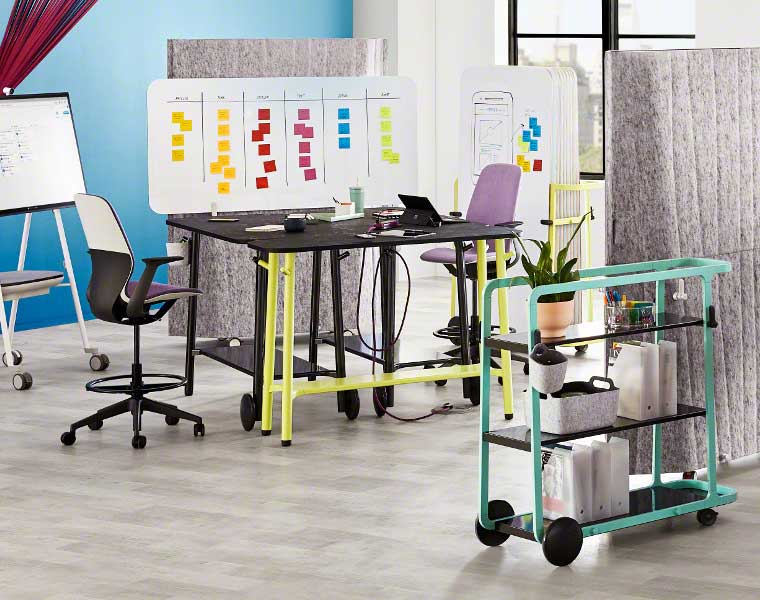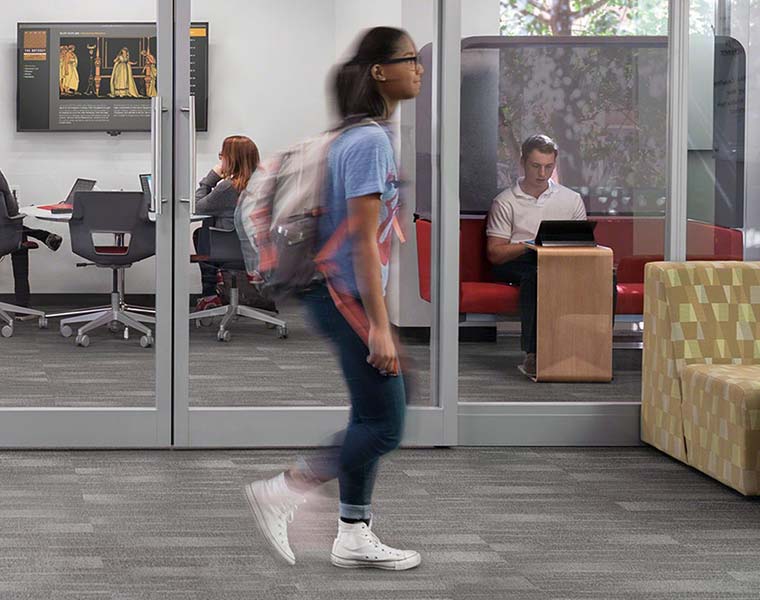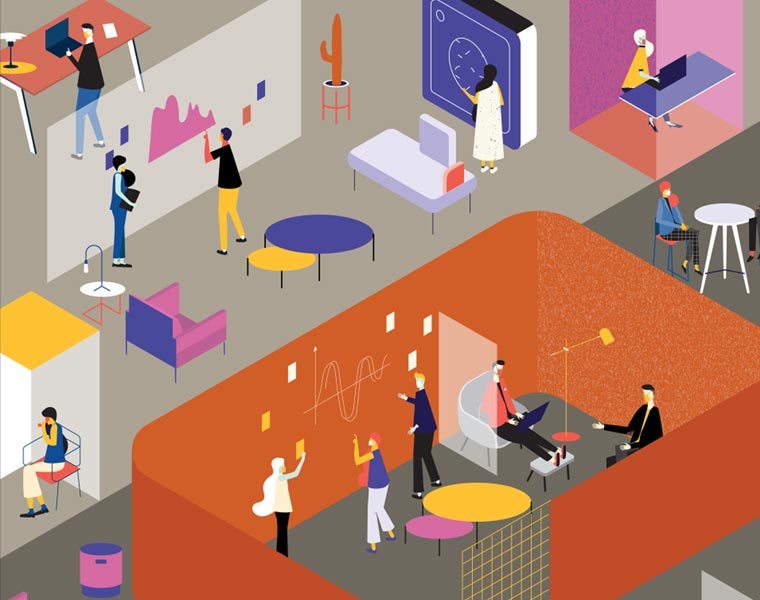Earlier this month we shared our breakdown of Steelcase’s ‘Density, Geometry, Division’ concept in response to theories around workspace design and culture in the post-COVID workplace. The theory outlines how we should be responding in three different phases: the Now, the Near and the Far. The Now is largely encompassed by how you can retrofit an existing space in order to make it safe right now and in this blog post, we explore some of those options.
However, in this article, we want to pose the question: is retrofitting really the only answer when it comes office interior design in response to new government guidelines around workplace safety? Sure, a retrofit project is a viable option but is there another solution which means businesses can prioritise safety now, as well as in the future, whilst still also being able to create the spaces they love, want to be in and feel inspired by? Our experts think so – because responding to COVID shouldn’t have to mean a compromise on design.

First though, let’s clarify the definition of retrofitting and what it means to retrofit a space…
What does retrofitting an office mean?
The dictionary definition of ‘retrofit’ means to provide something with a component or accessory not fitted during manufacture. Using a simple example – this could mean adding a DAB radio to an old, retro car. In terms of a workspace design scheme or office fit out, this means appending the layout or the furniture in it in some way to improve its style or functionality.
In a non COVID-related context, a business might retrofit its working environment by adding in suspended ceilings, or partition walls. On a smaller scale, it might mean adding an additional component onto a chair or desk to make it more ergonomic, or adding in height-adjustable furniture to make the working environment more inclusive.

How to retrofit a workspace to make it COVID-safe
As we mentioned above, the practice of retrofitting can be used to create a government-approved workspace which employees feel safe and comfortable returning to as restrictions continue to loosen. This is an effective way to address the ‘Now’ that Steelcase refers to in the Navigating What’s Next guide by evaluating the Density (population), Geometry (configuration) and Division (barriers and social distancing) within the space.
Ways retrofitting can be used include:
- Sneeze guards and protective desk screen solutions
- Optimising use of outdoor work settings
- Rethinking the configuration of the space to put more distance in seating arrangements
- Signs and wayfinding to enforce one-way systems around the space
However, as we said at the beginning of this blog post, our experts think there might be another way…

To retrofit or not to retrofit?
Whilst those options are all viable and available to you, what our experts are suggesting is that you don’t need to go through the retrofitting process in order to navigate what’s next. Retrofitting in compliance to COVID-security has the potential to lead to workplaces which are aesthetically unappealing, non-conducive to collaboration, and something that might be expensive to reverse in a few months’ time when precautionary measures don’t need to be quite so tight.
Attaching screens to desks, moving floor boxes to accommodate new configurations and organising storage to house spare furniture to help reduce capacity are all measures which could be avoided. Protective screens have their purpose and if you want them to be part of a future-proof plan against infection control then by all means, make them a permanent fixture. For some though, the implementation of sneeze guards and shields for the foreseeable future isn’t an appealing option. This could then also lead to a substantial amount of waste product.

So, what are the alternatives to retrofitting?
Normalise working from home – Businesses around the world have reaped the benefits of remote working and the most successful will be the ones who can embrace this going forward. The benefits of sharing a physical workspace and face-to-face collaboration are equal in weight but response to COVID-19 has taught us that there needs to better balance, increased flexibility and more agile working.
Strategise a phased return – Normalising working from home means that you will also be able to successfully organise a phased return to work. This responds to the addressing of workspace density without having to drastically alter the physical environment itself. Create a rota of occupancy so that there naturally becomes more space (and therefore distance) in the workplace.

Bring your company culture up to date – These are all new ways of working – staff are remote and collaboration is happening via video call. As a business owner, now is the time for you to re-educate and reposition your company culture in order to retain staff and continue to attract talent within your industry. Employees are going to have new requirements now, it’s up to you to facilitate them.
Read more about the connection between workspace design and company culture.
Doing all of the above means that you can design and create the workspace you want, whilst still keeping employees safe and nurturing their wellbeing. It also means you can avoid the cost of a retrofit scheme and repercussions of any immediate alterations or waste product in a few months’ time.



